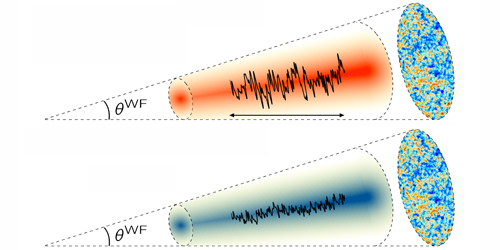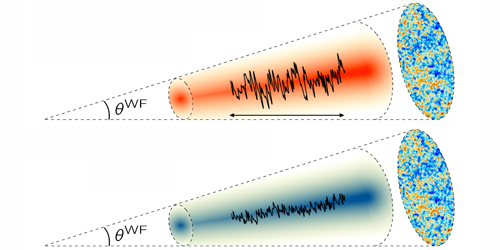Seeing Dark Matter Through the Clouds
As light travels to Earth from distant quasars, it’s absorbed at certain frequencies by hydrogen in intergalactic clouds, which carve a “forest” of absorption lines in the light spectrum. Measuring this so-called Lyman-alpha forest can reveal properties of the clouds, helping researchers test cosmological models. Now, Cyrille Doux at Paris Diderot University and co-workers have shown they can obtain new astrophysical information by correlating Lyman-alpha lines with lensing effects in the cosmic microwave background (CMB). This correlation may shed light on the relationship between gas clouds and dark matter.
Both the Lyman-alpha spectrum and CMB lensing are sensitive to the density of matter along the line of sight of the observer. While Lyman-alpha signals can be related to the density of hydrogen atoms, lensing, which characterizes distortions of the CMB caused by gravity, is an excellent probe of dark matter, the most abundant type of matter in the Universe. Using CMB data from the European Space Agency’s Planck mission, and quasar spectra collected in the Sloan Digital Sky Survey, the researchers revealed that the two sets of data are correlated. Specifically, they found that in directions along which the density of dark matter is relatively high, the fluctuations in the Lyman-alpha signals are also larger than average.
The detection of this correlation has two key implications. First, it will help researchers characterize the effects of astrophysical processes on fluctuations in the Lyman-alpha forest. Second, it may expose the influence of dark matter on the distribution of visible matter in intergalactic space—an important input for cosmological models.
This research was published in Physical Review D.
–Matteo Rini
Matteo Rini is the Deputy Editor of Physics.





